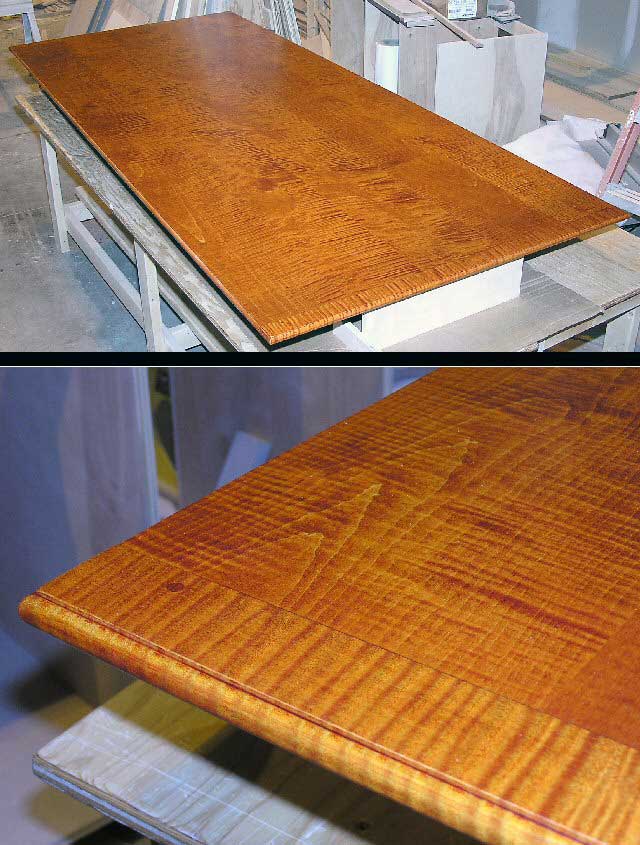Question
I just had my first experience with ML Campbell's Krystal. I didnít have any major problems, but did have a few little ones.
I had to do 3 pieces. The first was a small 10" x 32" back splash with a 22" x 32" counter top and a 42" x 96" table top. Itís all curly maple stained with a custom MLC stain/dye mixture. The smaller pieces I didn't really have any problems with. The large piece I had a problem with though. The first coat was a piece of cake (of course). The second coat, which was suppose to be the money coat, turned out rough is spots. Nothing was glass smooth, but it was smooth enough.
There were spots that were not smooth enough though. I used out the sander with the 220 that was recommend and roughed up the piece again, and shot a third coat making sure to get a good coat down. Again I had spots where I could see where it was flowing out very nicely, and spots were it looked rough. I catalyzed 10:1 and the first two coats I added 10% thinner because it wasn't coming out of my gun like Magnamax would. I figured maybe that was my problem, so I mixed a new batch with no thinner and used a little more pressure in the gun.
What could I have done to help with this problem? Would adding the care retarder have helped me out in this situation (large tabletop)? Or maybe the MLC Care flow enhancer? I hope this acts similar to Magnamax - go in the next day and everything has smoothed itself out. Hopefully someone will be able to lead me in the right direction.
Forum Responses
(Finishing Forum)
From Paul Snyder, forum technical advisor:
It's not clear what type of spray problem you have. Rough spots sounds like dry spray/overspray, but that may not be what you're experiencing.
The range of fixes for the problem include, using a larger needle/nozzle on the spray gun, thinning (including using a little retarder), moving the spray gun closer to the surface, moving the spray gun slower, and etc.. Since CV has higher solids than lacquer, it kind of defeats one of the advantages of using it if you thin it a lot - namely fast build with less coats. But since itís higher in viscosity than lacquer, you'll either need to use a larger needle/nozzle, or thin it to get it to spray the same as the lacquer.
